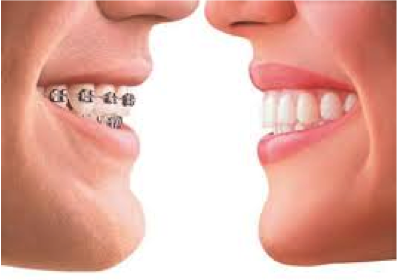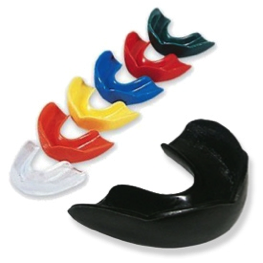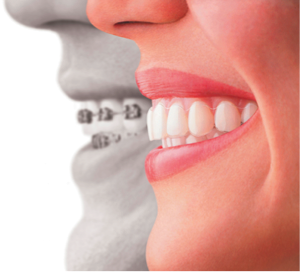Dr. Peralta has been included in Seattle Met Magazine’s list of Top Dentists for 2015! You can view the complete list here. Thank you to all of our patients and staff for your support and for making our jobs so enjoyable every day!




Dr. Peralta has been included in Seattle Met Magazine’s list of Top Dentists for 2015! You can view the complete list here. Thank you to all of our patients and staff for your support and for making our jobs so enjoyable every day!


Here at our Seattle, WA orthodontics practice, patients often ask us if it’s necessary that they have teeth extracted before getting braces. That’s why we’ve decided to dedicate this blog post to the topic.
Removing teeth is sometimes required in order to achieve the best orthodontic results. Straight teeth and a balanced facial profile are always the goal of orthodontics. Whether or not we extract teeth before orthodontic treatment is determined on a case-by-case basis and comes down to analyzing facial features, the profile, the amount of crowding present and incisor tooth position.
Extraction of Primary Teeth
Everyone has two sets of teeth during their lifetime – primary teeth and permanent teeth. One of the first things your orthodontist does at your initial consultation is to see how many teeth you have. While everyone is different, primary teeth usually come out by a certain age and in a certain order. These teeth can be problematic if they fall out too early or too late. If they come out too early, a plan can be put into place that will maintain the space until the permanent, replacement teeth grow in.
If the primary teeth do not fall out soon enough, they can create an orthodontic problem or indicate that a problem already exists. Therefore, it’s sometimes necessary to remove primary teeth to make sure there is normal eruption and development of the teeth that come in later.
Extraction of Permanent Teeth
While most parents don’t have concerns about their children having primary teeth removed, many people are hesitant to have permanent teeth extracted. There are several reasons why permanent teeth may need to be extracted before braces are placed and these are:
• Crowding – If the amount of space required to align the teeth is less than the space available, permanent teeth may need to be extracted. If the patient has moderate to severe crowding and insufficient gums or bone, it may be necessary to extract permanent teeth prior to orthodontic treatment.
• Protrusion – If a patient has protruding front teeth, extracting teeth on either side will allow the orthodontist to move the teeth into the proper positioning so that the patient obtains a good facial profile.
• Overbite or Underbite – If the upper and lower jaw sizes are different or mismatching, it may be necessary to extract teeth to compensate for the problem. This extraction of teeth can eliminate the need for jaw surgery in most overbite patients and in some underbite patients. Most patients with overbites or underbites are willing to have two upper bicuspids removed in order to prevent the need for jaw surgery.
At Orthodontics of Burien, we don’t always jump to extraction if we can avoid it. Dr. Peralta is able to plan treatment in a way that negates the need for extractions. Here is an example of a patient of our’s who did not have extractions, but might have been a candidate for them at another orthodontic office:
Before:

In other cases, extraction is necessary in order to move the teeth into ideal occlusion, as seen in the before and after images below of one of our patients.
The teeth most often removed for orthodontic reasons are the first bicuspid or pre-molar teeth and the molars. Approximately 20 to 25 percent of patients require extraction of permanent teeth with their orthodontic treatment. When you are first seen by Dr. Jorge Peralta, our Seattle orthodontist, he will provide you with a comprehensive evaluation to determine whether or not some teeth should be removed prior to placing braces on your teeth.


Why See an Orthodontist?
It’s rather common for people to wonder why they should see an orthodontist instead of a regular dentist when they’re seeking orthodontic treatment. After all, dentists and orthodontists both deal with teeth and both are doctors. While many dentists do offer braces and other orthodontic treatment options like Invisalign, it’s always best to have your orthodontic treatment done by an orthodontist.
Unlike a dentist, an orthodontist continued his or her education for two or more years after graduating from dental school. This further education includes special training to address more serious dental problems such as issues concerning tooth and jaw alignment. There’s a reason that dentists are the most common referrers of orthodontic patients. These dentists understand that special treatment that only an orthodontist can provide is needed, which might include braces or other orthodontic appliances.
Orthodontists: Providing More Than Just a Pretty Smile
An orthodontist will create straight, beautiful smiles for his or her patients. Besides a great smile, an orthodontist is responsible for other aspects of oral health as well. There are many problems with the mouth that can usually be corrected or improved by seeing an orthodontist, including:
Orthodontists are also experts in dental and facial development. Orthodontic professionals have been educated on how to master the physics of tooth movement as well as understanding the biology of facial development and guidance. This means that patients obtain better overall results with orthodontic treatment when an orthodontic specialist has provided it.
No two people have the same facial structure or teeth and jaw configuration, therefore orthodontics is never a one-size-fits-all solution. An orthodontist provides each of his or her patients with a very thorough oral examination. This evaluation involves taking specialized orthodontic records, which may include X-rays and 3D images. This attention to detail is done with the intention of determining the best possible treatment plan that will ensure an ideal outcome. For an orthodontic specialist, this outcome is straight teeth, a healthy bite and facial symmetry.
Visit your Local Seattle, WA Orthodontist!
Although there are dentists providing orthodontic services in the area, it is best to schedule an appointment with an orthodontic specialist like our very own Dr. Peralta at Orthodontics of Burien. If you are searching for a beautiful smile and are in the Seattle area, contact us to schedule your complimentary first visit!


An ever-increasing number of teens and adults are choosing to wear Invisalign clear aligners over traditional metal braces. There are many reasons why people have been coming around to this orthodontic treatment option. For instance, the fact that the aligners are transparent, making them virtually invisible, is a big draw. Invisalign patients also enjoy being able to conveniently take the aligners out when eating, brushing and flossing their teeth. Even though it seems as though Invisalign could work on anybody, this orthodontic treatment option is not always the right treatment for certain patients.
Are You a Candidate for Invisalign?
If you are a teen or adult who wishes to correct your bite but don’t like the idea of wearing traditional metal braces, Invisalign may be a good treatment option for you. However, Invislign is not for children or for adults with severely crooked teeth or neuromuscular bite problems.
Invisalign is a good option for teens and adults who wish to correct their bite discreetly. It’s also a good option for patients who want the convenience of not having to worry about food restrictions or problems cleaning their teeth while in orthodontic treatment. Additionally, Invisalign is a good option for professional adults who do not wish to wear visible metal braces.
What Invisalign Can’t Do
While Invisalign can be used to treat some types of orthodontic problems, its effectiveness is limited. This is because in comparison to traditional braces, removable braces systems like Invisalign do not provide your orthodontist with as much control over creating certain types of tooth movements. Invisalign cannot treat severe cases of malocclusions nor is it considered the best solution for treating cases that involve:
Severely rotated teeth – Teeth that are rotated from their normal position more than 20 degrees and especially molars and lower eyeteeth.
Teeth that are severely tipped – Teeth angled more than 45 degrees from normal
Large spaces between teeth – Cases where all tooth gaps combined total more than 6mm per arch
Other problems – Severe deep overbites, skeletally-based malocclusions and open bites or other cases where the extraction of teeth is required
When you schedule a complimentary consultation with our Seattle, WA orthodontic office, Dr. Peralta will provide you with a thorough examination to determine if you are a candidate for Invisalign. Dr. Peralta is a certified Burien, WA Invisalign provider who uses the most current orthodontic technology available. These advancements in technology allow him to cater to your unique needs in the most effective and efficient manner possible.


For a youngster, getting braces on their teeth can seem like the end of the world. Many children worry about how braces are going to affect their appearance. They’re also often concerned about the pain associated with having their braces tightened.
Dr. Peralta and his staff here at Orthodontics of Burien, your leading Seattle, WA orthodontic practice, want our patients to feel good about wearing braces. That’s why we’re offering the following tips to all you parents out there that can help your children become used to wearing braces on their teeth.
Dealing with Soreness and Discomfort
The first few days are the worst as far as soreness and discomfort are concerned. Remind your child that it’s normal for the teeth and mouth to be sore after having braces put on but also remind them that this discomfort only lasts for a few days. We do not want the discomfort of new braces to change your child’s daily life, and we don’t ask that patients change their schedule when they first get their braces. Rather, we recommend patients stay busy to keep their mind off of the discomfort. Your child can take over-the-counter pain medication such as Ibuprofen to help him or her deal with the soreness and discomfort if needed. You can help by preparing soft foods for the first few days. Foods like soups, mashed potatoes, yogurt, scrambled eggs, macaroni & cheese and applesauce are braces-friendly foods your child can enjoy while adjusting to braces.
Orthodontic Wax
You can pick up orthodontic wax at nearly any drugstore. This wax is designed to be placed on brackets and wires that may be causing sore spots on the inside of the mouth. Your child can use as much of this wax as needed. To apply it, just have your child squash the wax between his/her fingers and then press it onto the wire ends or brackets that are bothersome.
Dealing with a Self-Conscious Teen
If your child feels very self-conscious about wearing braces, remind him or her of all the celebrities who wear braces now or who’ve worn them in the past. Some famous faces with braces to mention include Faith Hill, Gwen Stefani, Emma Watson, Tom Cruise and Prince Harry. It also could prove helpful to tell your teen that wearing braces is very common and that most people are not at all judgmental towards people who are in orthodontic treatment.
Remind Your Child of How Great They Will Look When the Braces Come Off
Remind your teen that he/she is going to have a straight and attractive smile when the braces come off at the end of the treatment process. Consider finding some before-and-after photos online or at our website that clearly show just how dramatic a difference braces can make.
If your child is really struggling with his or her personal image after being fitted for braces, see if you can help in another area of his or her appearance. Maybe a new haircut would make your teenager feel better or even a new pair of shoes or shirt. You also can help your child cope with braces by complimenting him or her on other aspects of his/her appearance or by pointing out positive personality traits.
Go to Each Orthodontic Appointment with Your Child
It’s a good idea to go along with your teen when he or she has to visit the orthodontist to have adjustments made. This way you can find out first-hand how the treatment is progressing. You also will be given the opportunity to ask the orthodontist any questions you may have. When you’re present at each orthodontic appointment, you’ll be showing your teen that you support him or her every step of the way on his/her quest for an improved, straight smile!


Dr. Peralta and his staff here at your leading Seattle, WA orthodontic office would like to wish all our school-aged patients good luck in the 2013-14 school year! Now that school is back in session and fall sports are being played, we’d like to remind our patients wearing braces and other orthodontic appliances of the importance of wearing mouthguards.
Mouthguards Protect Against Serious Injury
When you wear a mouthguard while playing sports or when partaking in any activity that poses a risk of injury to the face or mouth, it will help cushion a blow to the face, minimizing the risk of broken teeth, injuries to your lips, tongue, face or jaw. A mouthguard is designed to cover your upper teeth and provides protection for the soft tissues of your lips, tongue and insides of your cheeks.
A mouthguard should be a part of your standard sporting equipment. Studies have proven that athletes are 60 times more likely to suffer injuries to the teeth if they’re not wearing a mouthguard. While you may associate the wearing of mouthguards with sports like football and boxing, a mouthguard also should be worn when playing many different sports, including:
In short, if you are partaking in any activity that carries a risk of you becoming injured in the face due to a fall or blow, you should be wearing a mouthguard. By doing so, you will greatly reduce the risk of serious injury.
A Custom Mouthguard Provides the Ultimate Level of Protection
You can find stock, or ready-to-wear mouthguards, and boil-and-bite mouthguards for sale at many drug stores and sporting good stores. While these two types of mouthguards do provide adequate protection against injury, a custom mouth guard made by our Seattle orthodontist will provide you with the highest level of protection, lowest profile and most precise fit.
When you are wearing braces or another type of orthodontic appliance it is still important to wear a mouthguard. There are special mouthguards available that don’t fit precisely to the teeth in order to accomodate changes in the teeth and bite, but still act as a barrier between your braces/appliance and your cheeks or lips to limit the risk of soft tissue injuries.
If you or your child is in need of a mouthguard, please contact our Seattle orthodontist office so we can help you choose the right mouthguard that will provide you with the best level of protection!


Dr. Peralta and his team at our Seattle orthodontic office are always pleased when our patients are getting their braces removed as it’s an exciting day for both the patient and us! However, just because you’re no longer wearing braces doesn’t mean that your orthodontic treatment is complete. In order to maintain your straight and beautiful new smile, your retainer must be worn consistently as it holds your teeth in place while your gums, ligaments and bones adapt to their new positions.
Why You Should Wear Your Retainer Consistently as Instructed
When you get your braces removed, your teeth will try to return to the original positions. This is why it’s an absolute ‘must’ that you wear your retainer as instructed by Dr. Peralta. You will most likely have to wear your retainer full time for six months after you get your braces off to ensure that your teeth get used to being in their new positions. This means you should wear it all day and all night, even to sleep. Otherwise, your teeth will simply move back into the positions they were in before you had braces put on, which means all of your orthodontic treatment will have been in vain, not to mention the cost you’ve paid for your braces!
Use Your Case!
On the day your braces are removed, we’ll instruct you to wear your retainer full time and will tell you that you should take your retainer out when eating. Remember to put it in the case when it’s not in your mouth as it’s very easy to lose a retainer in a school lunchroom or restaurant. Keeping your retainer in the case when you’re eating will also help ensure that your retainer doesn’t become damaged or even chewed on by your pet as dogs tend to enjoy chomping on retainers!
Most of our patients are instructed to wear their retainers full time, day and night for six months and then only at night for the rest of their lives. While wearing your retainer for the rest of your life may sound extreme, it’s important because as you age your teeth could slowly shift back into the positions they were in before your braces were put on.
We want you to be just as happy and proud about your straight new smile years from now as you were the day you got your braces removed! It will become second nature for you to wear your retainer regularly and by doing so, you’ll be able to maintain your amazing new smile for the rest of your life!


Dr. Jorge Peralta and his Seattle orthodontics team offer a full range of treatment options so that we can cater to each of our patients’ unique needs. In addition to using clear ceramic braces, traditional metal braces and Incognito lingual braces, we also offer Invisalign clear aligners to our late teen and adult patients who wish to perfect their smiles without the use of wires and brackets.
About Invisalign
The innovative Invisalign System consists of a series of clear, removable aligners that gradually move teeth. The custom-made series of aligners are created for you and only you using computer-generated, 3D image based on the exact movements Dr. Peralta plans out for you. There are no metal brackets to attach and no wires to tighten. You simply put a new set of aligners every two weeks or so until your treatment is complete and you achieve the straight, confident smile you’ve always wanted.
Benefits Provided by Invisalign
When you’re wearing Invisalign, most people won’t even notice that you’re having your teeth straightened because the translucent clear aligners blend in with your teeth. This provides you with increased confidence and self-esteem throughout your treatment process as you won’t have to concern yourself with how you look while having your teeth straightened. You can smile with confidence and feel your best as you enjoy this virtually invisible teeth straightening process.
Because the clear, smooth aligners can’t poke the inside of your mouth like metal braces can, you won’t experience pain or discomfort associated with metal braces. Additionally, you won’t develop mouth sores or suffer injuries caused by brace wires because there are no wires used. Also, because you can take the aligners out, you’re able to eat all the foods you love like hard crusted breads, nuts, corn on the cob and other foods you enjoy. You also can take the aligners out when brushing and flossing so you don’t have to worry about the buildup of plaque around brackets, which can lead to the development of tooth decay.
How Invisalign Works
You will wear each set of aligners for approximately two weeks, removing them only when you eat, drink, brush and floss. As you replace each aligner with the next in the series, your teeth will gradually move until they have straightened to the final position prescribed by Dr. Peralta. You will come into our Seattle orthodontist office about once every six weeks to ensure that your treatment is progressing as planned. You will use between 18 and 30 aligners during your treatment process that can take between 9 and 15 months to complete.


Dr. Jorge Peralta and his staff of friendly professionals would like to remind our patients that February is Children’s Dental Health Month in the United States. During this month, dentists and orthodontists across the country focus on providing their young patients and their families with tips on how to take care of their teeth so that they can achieve beautiful, healthy smiles that will last a lifetime.
We are very proud to be a leading Seattle, WA orthodontist office that treats patients in the greater Seattle area as well as those living in Burien. Dr. Peralta believes that great orthodontic care is so much more than straight teeth. It’s about preserving your teeth for the duration of your life by having them precisely positioned so that you have a healthy bite and enhanced facial aesthetics.
During Children’s Dental Health Month, Dr. Peralta and his staff will be focused on helping our young patients and their parents learn how to care for their teeth at home. We know that it’s common during the year to get caught up with your active lifestyle. When you are busy, it’s easy to put important things off like teaching your children how to properly brush or floss so that they develop good habits early that they carry with them throughout adulthood. When you take the time to teach your child how to properly care for his/her teeth, gums and mouth, he or she will develop good oral health habits to ensure that he or she has a healthy and attractive smile that will endure a lifetime.
Orthodontics for Children is Important All 12 Months of the Year
Not only is orthodontic treatment for children important during Children’s Dental Health Month, but for the other 11 months of the year as well. If your child has crooked teeth or an uneven bite and it goes untreated, he or she may grow up to be very self-conscious. And, more seriously, untreated malocclusions and crooked teeth can lead to all types of serious health problems so getting your child’s teeth straightened while he or she is young is of the utmost importance.
There Are Many Options Available in Children’s Orthodontic Treatment
Today, there are more orthodontic treatment options available to kids than ever before. In addition to traditional metal braces, we also offer clear ceramic braces, Incognitio lingual braces and Invisalign for our teen patients. The Invisalign system consists of a series of clear, smooth aligners that gradually move teeth into place. Invisalign is available to some of our late teen and adult patients who want to perfect their smiles without having to wear visible, metal braces.
Dr. Peralta would like to encourage parents to schedule appointments for their children during Children’s Dental Health Month for a preliminary orthodontic consultation and exam. Even if you forget to schedule an appointment in February, you can still do so at any time of the year as it won’t be too late to set your child up with his or her first Seattle orthodontist visit. During this first appointment, our team will determine if your child needs treatment and if so, when the most optimal time for treatment is. Early orthodontic care can provide your child with a huge advantage for the future concerning his or her oral health. Contact our Seattle orthodontics office today to set up your child’s first visit!


Dr. Jorge Peralta and his staff of friendly professionals would like to take this opportunity to welcome you to our blog! Dr. Peralta is a leading local Burien and Seattle orthodontist who strives to provide the absolute best treatment and care to make our patients feel confident and excited about their new smile!
Meet Dr. Peralta
Seattle orthodontist Dr. Jorge Peralta attended the University of Nevada-Reno where he studied biochemistry. Because of his stellar academic achievements as an undergrad, he was granted early acceptance into Columbia University, one of the country’s most elite dental schools. Upon graduation, Dr. Peralta received his orthodontic training at the University of Colorado Health Medical Center.
Dr. Peralta is an active member in several professional organizations. He is bilingual and speaks both English and Spanish fluently. He is committed to the Burien community and stays involved in several local school and charity fundraisers. When not in the office, Dr. Peralta enjoys painting, photography, golf, baseball and walking his two dogs.
Orthodontic Treatments We Provide
At our Seattle, WA orthodontic office, we provide an array of orthodontic treatments including metal braces and ceramic braces. Dr. Peralta is a certified Invisalign provider and offers adult orthodontics and the two-phase system.
To request a new patient appointment at our office, please fill out and submit the ‘Appointment Request’ form on our website. One of our staff members will then contact you to set an appointment time.
Thanks for visiting our blog! We plan to use this space to share office news and information with you. We also will be posting regular, interesting reading materials here related to the world of orthodontics. Do stop by often to see what’s new! Remember that your smile is your greatest asset so use it often!